So the question that gets asked at sailing clubs right around Australia has now been firmly put on the agenda – we find ourselves questioning the relevance of the Olympics and also bashing on the decisions by our international governing body.
And here we sit in our own corner of the world, and ask ourselves, in a day and age where the commercial world is swallowing everything in its path, where does sailing fit in the Olympics?
A number of key sailors on the Olympic circuit recently penned an open letter to the sailing community, asking World Sailing to reconsider its thinking for the Paris 2024 Games, which has placed classes such as the 470 (men and women), Laser Standard (men), Laser Radial (women), the Finn (heavyweight men), and the men and women’s windsurfer under review. These sailors raise important issues about the importance and relevance of the classes they have trained in for years, but let us take a step back for a short time and look at this issue with a wider lens.
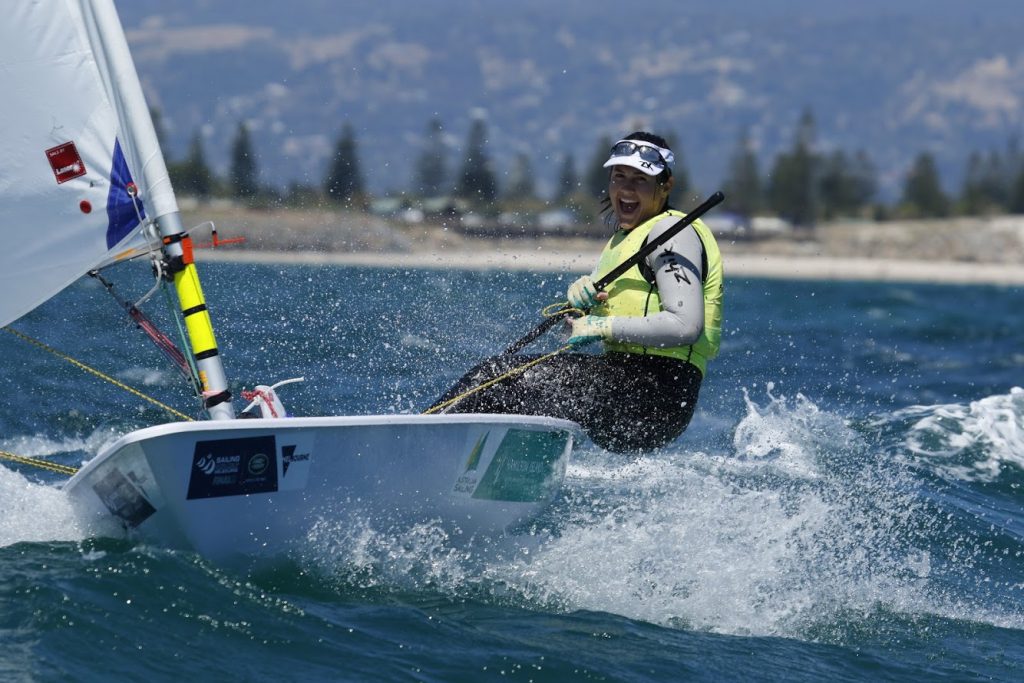
Olympian Ash Stoddart competing at the Australian Laser Nationals in Adelaide in the 2016/17 summer. Photo: Dave Birss, Epsom Rd Studios
For years, sailors have talked about how hard it is to make sailing a television sport, how it is not attractive to sponsors and advertisers, and how the demographic is one of older well-off individuals who don’t need the corporate support. It’s also clear our qualifying process for the Olympics is a shambles, outlined by the last cycle’s decision to not send a 49erFX crew to the Rio Games as they were not seen as a realistic medal chance, despite qualifying to compete. We covered this issue in an editorial piece titled ‘Sold a dream with no reality’.
There are now several professional circuits around the world enabling sailors to make a living in their dream job. The America’s Cup, Volvo Ocean Race, Extreme Sailing Series, World Match Racing Tour and SuperFoiler Grand Prix are examples of this. They are examples of how corporate funding and an industry-driven product can make it in the mainstream, so why is it necessary to slog away on a four-year cycle, fork out the big bucks and put yourself significantly behind in life.

The SuperFoiler Grand Prix has taken sailing by storm in the last year. Photo: Michael Chittenden
Not everyone has an opportunity to invest that much time, effort and money and to bounce back on their feet once it is all said and done – and we can all agree that no matter who you are you need strong support networks to undertake this challenge. It’s sad that we don’t have to travel far in our sailing communities to find the stories of those that were unsuccessful and drained their savings reaching for the proverbial brass ring only to fall short and feel like years have been taken off their life. As a parent looking out for your child’s future, especially considering the hours of coaching and travel at youth level that is an investment in itself, wouldn’t you rather choose to steer them towards professional avenues that give them some form of financial security and a return on their investment, away from the Olympic pathway? Sure, it can be argued that many of the professional sailors in our sport today came from Olympic backgrounds, however the only reason they are at this point is because of access to high performance programs through the Australian Sailing Team and Australian Sailing Development Squads. What if this sort of training was available without the Olympics?
When we look deeper into other water sports as examples, there is a lot we can learn about the industry as a whole. Take a look at Surfing Australia as an example. While the jury is still out on whether adding the sport to the 2020 Olympics will enhance the product, surfing has historically survived and thrived through a number of strong industry partnerships, as well as the occasional grant. Its funding ratio is a lot different to sailing, which relies heavily on grants and AOC funding and is therefore built in reverse. Surfing built the Hurley High Performance centre, a facility that has become the centrepiece of Australian Surfing and has yielded numerous World Titles on the WSL.
This example proves sports do not need the Olympics to provide a high level of coaching and support. Why can’t our best Moth sailors head to a World Championship with this sort of backing? Why can’t someone at the top of their game heading to the America’s Cup have access to a training facility like this? Why can’t a local Sabre group or sailing club pay to spend a weekend at the facility and get better at what they do? And why can’t a school group spend a week learning how to sail, discovering a genuine pathway with a job at the end of it if they are good enough? Surely the Olympics is not the reason why everyone sails? It is great to rub shoulders with Olympians, but Mick Fanning has never been to the Olympics yet he is idolised by millions, and Steph Gilmore and Sally Fitzgibbons have been role models for young women all around the world and have never been to an Olympics.
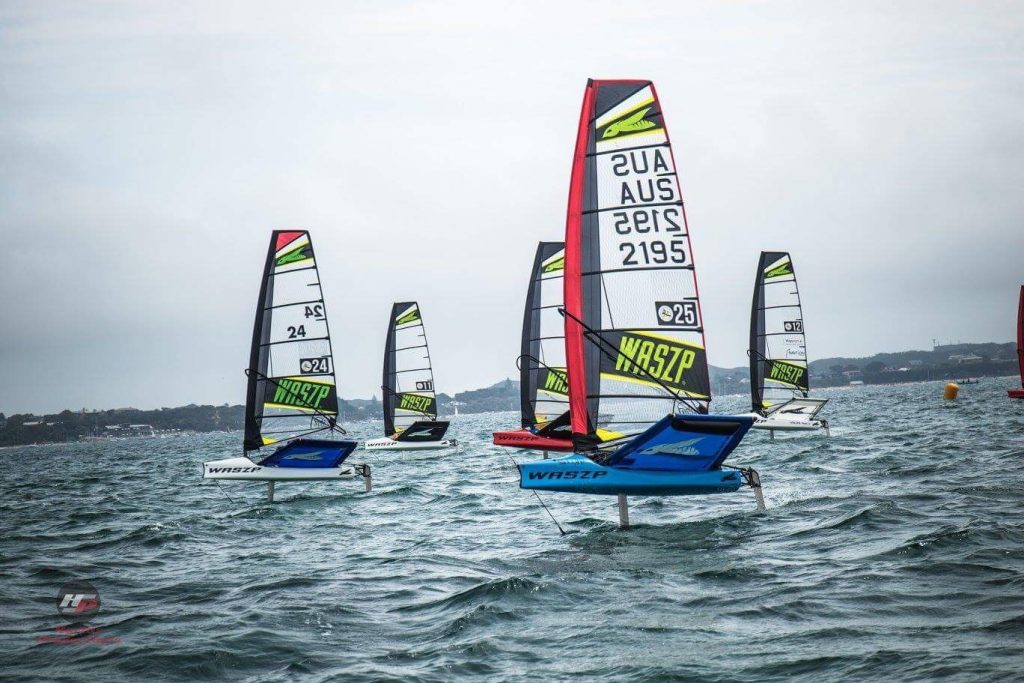
The WASZP foiler is proving that sailing can be fun, accessible and cost-effective. Photo: Hartas Productions
We have a sailing industry that is bleeding money and struggling to survive as evidenced by depleting membership numbers at grass roots clubs right around Australia and the ongoing struggle for those clubs to find viable revenue streams, but why is this the case when we are a sport that is represented at an event that is supposedly the pinnacle of world sport? This goes to show the Olympics is not a commercial venture, it was originally designed to be a competition for amateurs and not a cheque book war. Hell, the Olympic creed even states that the overriding purpose of the Games is not to win, but to take part. Sailing is awkwardly stuck in the middle, with sponsors struggling to find bang for their buck on an Olympic athlete due to limited brand awareness, airtime or the fact that they are blocked from third-party deals that conflict with the governing body’s partnership and sponsorship deals. They may get 15 minutes of airplay if their athlete wins a medal, but is that really worth it? Considering the dollars that are being spent to get these athletes around the world, it seems like a massive cost.
We’re not knocking the Olympics by any means, but more simply asking the question of ‘if we did not have sailing in the Olympics, would it open up more commercial opportunities for the industry as a whole and drive the direction of the sport?’ … we believe that it absolutely would. The outcome? We end up with a thriving industry that starts to give back to sailing and make more money available to spend growing participation at club level right across the country and not just at the major clubs on the eastern seaboard. Rather than everyone fighting for their slice of the pie, we actually have the opportunity to make the pie bigger. Most businesses in our industry are fantastic supporters of local sailing, however there is no money in it for them and they find themselves doing it purely for love. We need our sport to be industry-driven and to gain rewards as a result, but unfortunately with the Olympics as the centrepiece and a governing body that needs to win medals to keep their 100 staff in jobs, we find ourselves running around in circles and slowly going nowhere as a sport.
Have a think about why people sail in the first place. The Laser isn’t popular because it’s an Olympic class, it’s popular because it’s accessible. The WASZP has exploded onto the Australian Sailing scene in massive numbers and has proven it can harness the troublesome age bracket of 18 to 35. This is because the class itself is accessible, cost-effective and a bucket load of fun. 16ft Skiffs are going through another growth spurt in New South Wales and are again dragging 18 to 35 year olds back to a sport they had since been burnt out of. We ask ourselves the same question of why, and keep coming back to the fact it’s because the clubs are driving the participation and they’re in total control of the outcome, which creates financial incentive to them and the industry itself.
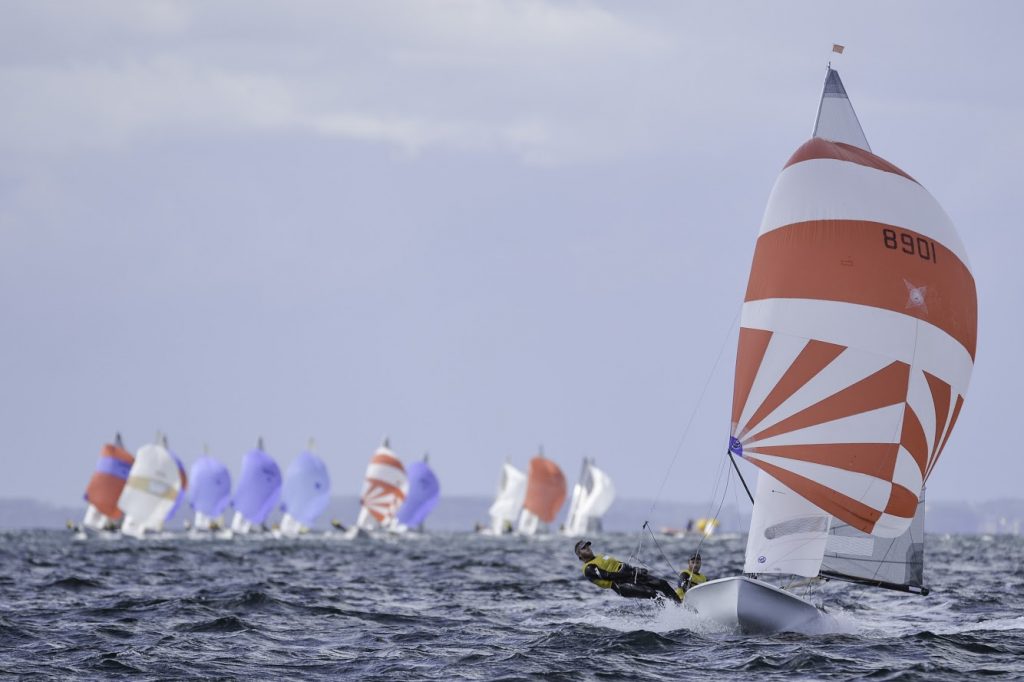
The 505 is one of the strongest international amateur classes in the world.
At the end of the day our respect level for Olympians is there in spades, they are fantastic athletes who have worked incredibly hard, spent thousands of dollars, and achieved their ultimate goal. To spend four, eight or even 12 years doing that has to be a brutal existence, so absolutely hats off. But out of the 10 disciplines we race at the Olympics, we see about 16 athletes from our country every four years that get to sail at the highest level – millions upon millions of dollars paid by tax-payers and sailors around the country to service 16 sailors.
Where does a club like Port Kembla Sailing Club in Wollongong fit into this? Or Parkdale Yacht Club in Victoria? Or even the Port Lincoln Yacht Club in South Australia? All these clubs have produced champions at various levels, as well as exported sailors to the professional circuit. Yet on the same note, there is absolutely no high-performance funding available at these clubs for development, they do it themselves and they are surviving… just.
Our opinion is that clubs and sailors should not be looking for handouts from Australian Sailing. The brief for them as a governing body is to win medals and provide education and training opportunities while also having a focus on youth sailing through a small selection of classes that find themselves on the same trajectory to classes raced in the Olympics. This hole that the grass roots of our sport is in, that is growing deeper and deeper from year to year, is not their fault, as they are judged on the outcomes set by their board and that their funding is dictated by. The sooner we all begin to look away from Olympic sailing and align our club structures with what is happening in the real world, the sooner the industry will be able to move forward.
Take a look at the statistics from recent cycles of Australian class championships. The findings are damning.
- 49erFX: 9 boats (18 sailors)
- 49er: 12 boats (24 sailors)
- Finn: 29 boats (29 sailors)
- Laser Radial: 75 boats (75 sailors)
- Laser Standard: 30 boats (30 sailors)
- Nacra 17: 2 boats (4 sailors)
- 470 Men (2017): 5 boats (10 sailors)
- 470 Women (2017): 5 boats (10 sailors).
The RSX even had an integrated event with the race board and formula windsurfing event and was outnumbered greatly by amateur formula and race board sailors.
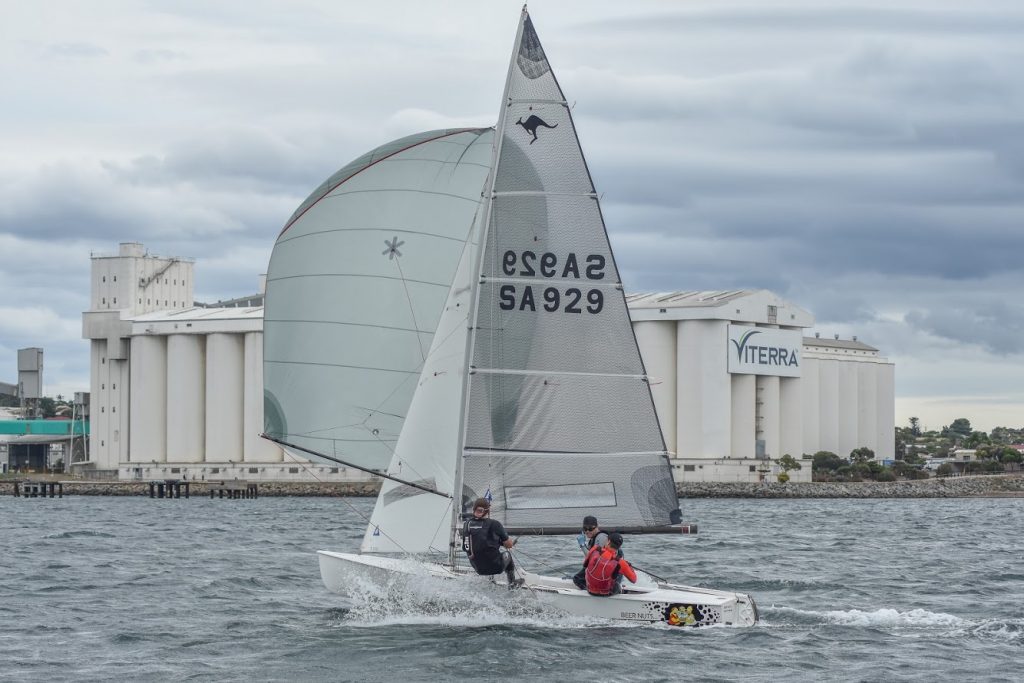
The Australian Sharpie Class always shows strong numbers at national events from year to year. Photo: Danielle Godden
Now take a look at other senior class options that are not on the Olympic trajectory and the participation rates they create with no support from Australian Sailing.
- 16ft Skiffs: 57 boats (171 sailors)
- Sharpie (2017): 44 boats (132 sailors)
- 505: 39 boats (78 sailors)
- Sabre: 55 boats and sailors in 2018, 65 in 2017, and 130 in 2013
- Impulse: 39 boats and sailors in 2018, 49 in 2017
- A-Class Cats: 51 boats (51 sailors)
- Moth: 38 boats (38 sailors)
- WASZP: 36 boats (36 sailors)
- Etchells: 32 boats (100-120 sailors)
- One-design windsurfer: 49 in 2018, 80 in 2017.
While a number of these classes are down on numbers from previous years and some have shown growth, what it tells us is that Olympic sailing does not keep people in the sport. Unfortunately we find newcomers are not being told of the different pathways they can take in the sport and find themselves with nowhere to go when the youth scene wraps up at 18 years of age. Some go surfing, some play team sports, and for others life just gets in the way, but who can blame them? The absolute last thing most of them want to do once they finish their junior and youth sailing is slog away for four years on a campaign trail that costs a bomb and has an extremely low success rate.
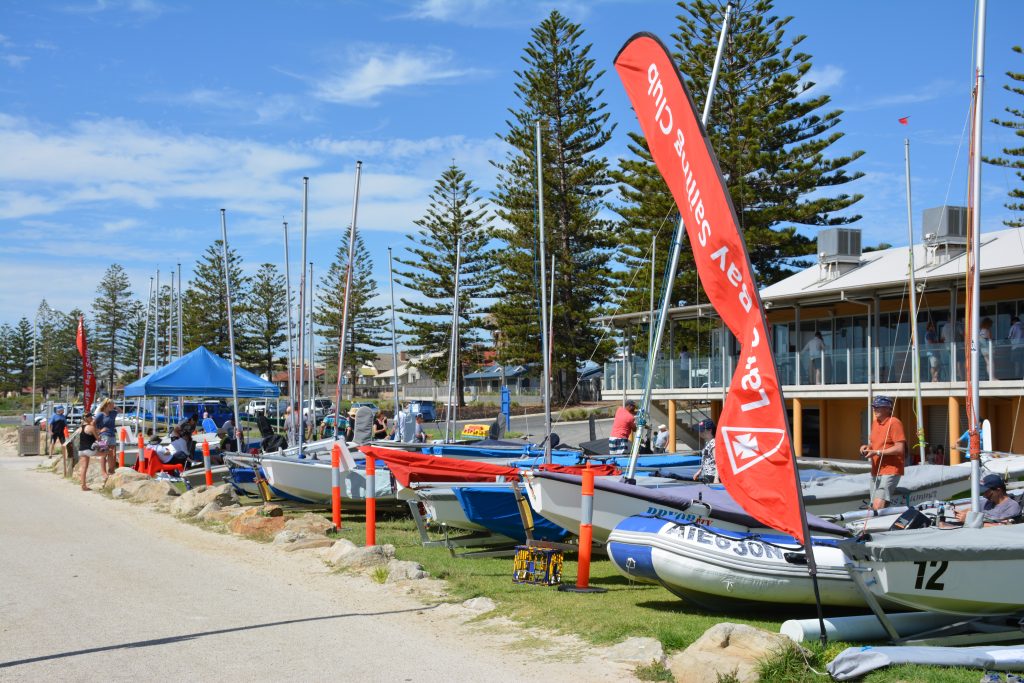
We think clubs are the key to driving the sport forward. Photo: Down Under Sail
This should be the most exciting time for a sailor, when you’ve finished school and have the opportunity to grab your boat and travel across the country with your mates having the time of your life, all the while enjoying everything a life around the water has to offer. It can be done economically, in your own time, and is a world away from the so called “pathway” we’re all told we need to be on.
Down Under Sail is trying to drive the industry forward and needs your support. If you have retention issues or your class is looking for the exposure it deserves, let us know and we can help. Together with our industry partners we want to drive the direction of the sport and give it back to the everyday sailor.


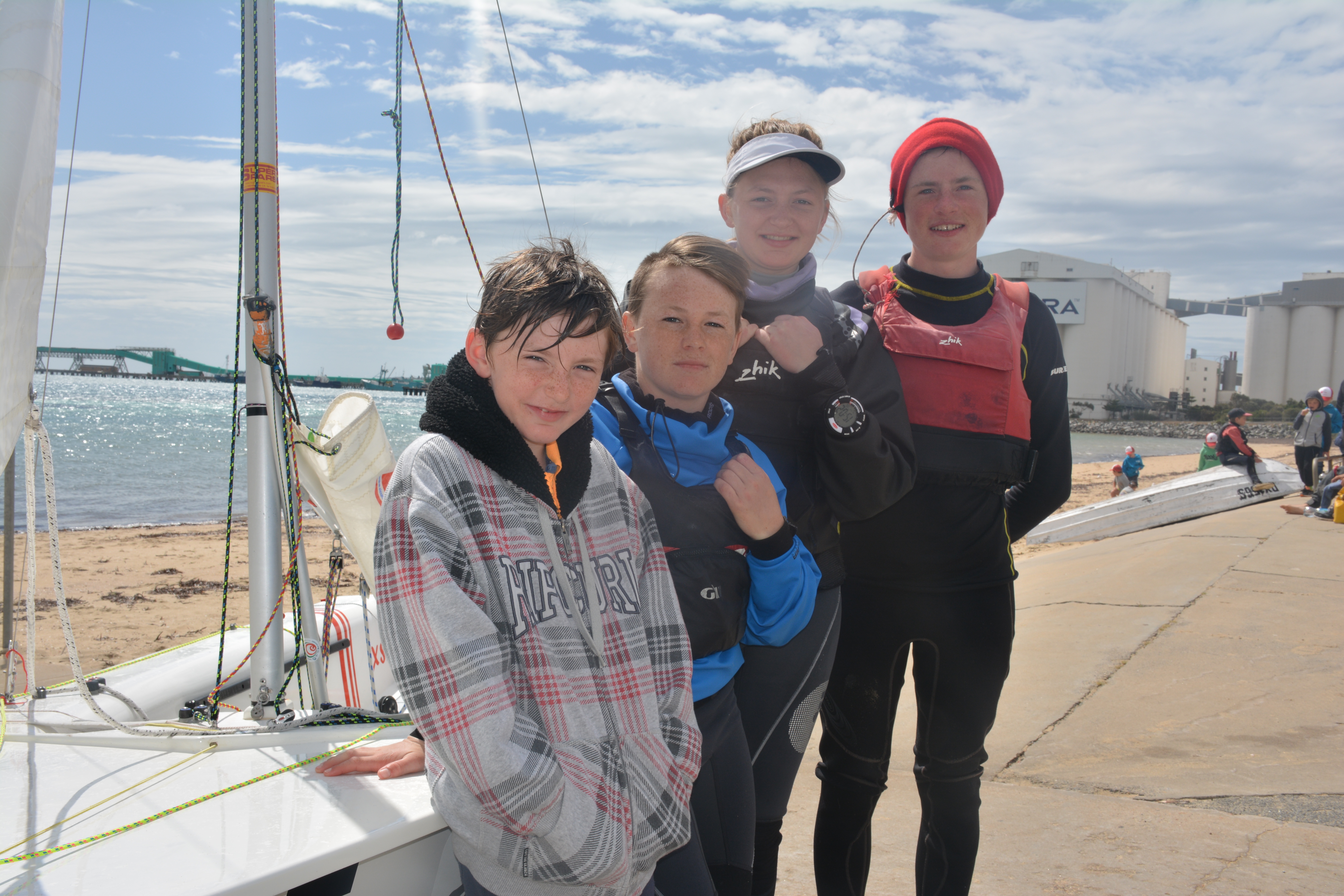

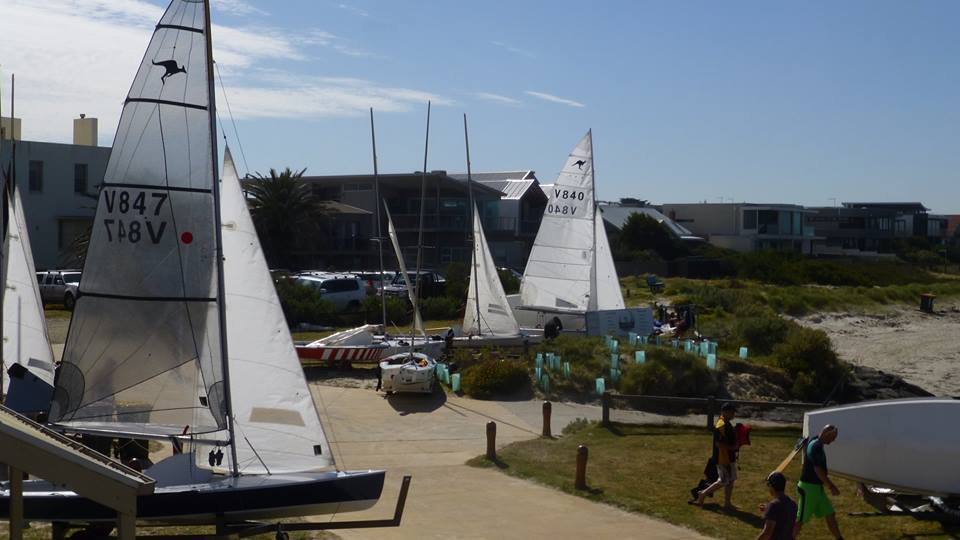
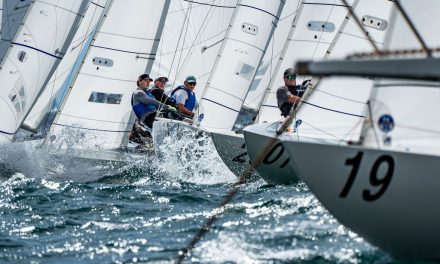
One issue that concerns me is that there is only one sailing show in the whole of Australia (The Pittwater Sailboat Expo). All the “Boat Shows” focus on fishing boats and big yachts – it’s unusual to see any sailboat under 30ft and dinghies are non-existent.
So how can we expect to excite newcomers to the sport or to encourage the adoption of new and better equipment by clubs full of veterans still sailing the same boats that were new in the 1960s.
There’s a huge drop-off in the sport in the early teens and young adults and possibly because the only sailing pathway they can see is the Olympic one which requires huge effort and resources to be successful.
OTOH, the UK has the annual RYA dinghy show which attracts over 8000 visitors in the middle of winter and clubs and classes are seen as offering sailing opportunities whatever your level or stage of life.
A well articulated opinion that should give us all pause for thought.
I started to sail in a VJ that cost 50 pounds in 1955,went on to have several new boats built and raced in NSW, and competed in national titles in Victoria and WA. Moved into 16ft skiffs and shared ownership with some mates for 400 dollars, sailed for several seasons at George’s River Sailing Club, where there was a limit of 50 boats for club racing and a waiting list. Moved to Hervey Bay in Qld and took the skiff with me and raced at Maryborough Sailing Club. Supposed performance “Improvements” costing heaps effectively destroyed economic sailing, not everyone wants to win a major title, but many used to enjoy a regular weekly race.
Time to take the blinkers off and have a good look at ourselves
Agree 100% about the need to strengthen the clubs and the classes that actually get people on the water. It’s great to see someone mention the strength of classes like the Sabre.
However, the numbers you give for the Laser nationals ignores the fact that the fleet is so big, it must often be split into Open and Masters nationals. There were 90 Radial Masters and 70 Standard Masters at nationals this year, taking the overall number of Standards up to about 100 entries and the Radials to a massive 160 or so.
Another thing is that while the fleets in Olympic classes are low, if we actually look back over the years we see that the fleets in many of the non-Olympic classes you mention have also dropped since the sport’s golden years. Many of them have dropped by about as much, proportionately, as the Olympic classes. That indicates, sadly, that the whole sport is losing numbers – not just the Olympic classes. For example the 505 used to often get almost 60 boats, as did the Fireball and Etchells. They’ve dropped as much as the Olympic classes.
While there are currently several pro circuits, that’s been the case for a couple of decades or more. Remember the ProSail series, the Formula 40s, the Grand Prix 18s, the Whitbread and the Windsurfing World Cup? They didn’t really make it into the mainstream. Those pro circuits were around while the sport peaked and then dwindled, so the fact that pro circuits exist doesn’t seem to show that the sport is healthy – if they did the sport wouldn’t have started shrinking about the same time the first pro series arrived.
Great conversation piece.
From my long experience in Olympic Sailing (1976 athlete then coach then 2000 Games Program architect/head coach) and being born out of a very creative age in sailing when many built, designed, rigged and raced their own sailboats i wish add to the conversation.
There was no noteable youth development systems just private coaches like Ken Minter, Mike Fletcher and no doubt many others in various states.
My own development was via parent equipment financial support through school years where my personal passion to design, build, rig and perfect my equipment and performance was the key outcome from these school years.
Instrumental in this was my blinkered approach from all else in life not distracting me too far from my sailboat adventures. I would argue most parents(ie mother and father as a couple) stuggle to accept such a focused approach at one thing at such a young and devlopmental age. However tbis aspect can be instrumental in whether a person has any hope at being able to reach true global elite performance.
What i have watched happen as elite systems and processes have developed is it has given those who want to aspire to global best an early in life excuse to not succeed!
I was the youngest Olympic Sailing Medalist from 1976 right through to 2008. Succeeded by an even better result by Elise Riechici(sorry) then later by Olivia Price.
Both these two had very very particular expertise devoted to exclusively them from early ages, the later being a youth development system(CYC in equipment very similar to their Olympic eqipment) that accelerated their expertise. All of us making excessive time and opportunity to succeed.
I would argue that it is impossible to provide such for a broader community of youth and get a desired global result as most involved Will find they just cant keep up with the life compromises and conflicts that such commitment causes.
The Olympics is Global and Elitest and not really about equipment. Its about sporting success AND Olympism and unfortuneatly politics within sport and family and competitors along the way.
The politics make the equipment involvement contentious for the athletes involved due to their personal time and money spent to get familiar with one piece then changed to another.(thus seeing what we are now seeing i social pages).
However! this is not new just like some seeming to have qualified for Olympic selection not being ratified for Olympics.
Our Australian national elite system is some what removed from weekend sport not because of National Sporting bodies but because of funding principles from Govt and ASC and AOC all who will have some experience of knowing and watching what I have elaborated on.
If you pick a money intensive sport you have to.be relaxed enough to run with what you can afford to do and enjoy your particular chosen challenge.
I am someone who never aspired to Olympic success but because of intense involvement and a very successful reputation at 18years old began to get backed by individuals, clubs and even foreign nation(Japan) to progress and attend world championships amongst lesser events. Once on these rails and my continued passionate uncompromising effort was on the up.and down merry go round until after 2000 Games when my own personal priorities changed dramatically, for good reason.
Hence, no longer am i on the manic side of sailboat racing success and attempting a much more normal greater family success.
Bye the way, bearing in mind the picture header and a 16ft Skiff, one of my most enjoyable sailing seasons ever was steering Buckle Toyota out of Manly 16fters with John Sherwood, Kenny Mac Intyre and a young 4th hand.
Sailing is a great sport but need to keep a healthy perspective on what you as an individual can put into and enjoy and challenges you can reasonably take out your involvement.
Cheers.
The Olympics is relevant to sailing in that it pumps a bunch of money into the national sailing associations. And the IOC will ONLY do that for classes that help its own agenda – which is to make the Olympics successful. It doesn’t (and shouldn’t) care about other wider agendas. That’s sailing’s problem.
And sailing’s problems start with far too much of sailing being either expensive or just no fun any more. Oppie squad training is miserable. Most kids around the world hate it after a while and the burnout rate is huge.
Yeah, Lasers are popular, but other classes that would be much MORE popular are squeezed out by many clubs insistence on one-design racing so new classes never get off the ground. And instead of racing being “fun”, it’s often ruined by people who are obnoxious on the course and snobs at the bar.
Plus, of course, over the decades most “yacht” clubs have excluded windsurfing because “it’s not really sailing”. Instead of having a thriving new arm they damaged themselves and windsurfing.
I read an opinion piece recently about how gof was dying. They could have replaced the word “golf” with the word “sailing”. It was a perfect match. Elitism. Expense. Exclusion. Snobbery. Lack of actual fun.
Numbers are down for all classes while other sport’s numbers are up. This can only be down to management and leadership of the sport coupled with the fact there could be an argument we now have a higher cost of living (housing, school fees etc..) compared to the 80-90s? The parents involved are more and more likely to be much wealthier than in the past when dinghy sailing was mostly a middle-class sport? My clients now as a coach usually have impressive wealth. But other better-managed sports have grown their participant numbers and there is much more government funding than ever for sailing– because of Olympic sailing. It is not a curse.
I spent an afternoon at a suburban AFL club to see my neice and nephew play. The atmosphere was so friendly. A different world to the scores of yacht clubs I have visited, worked in. I was shocked at the difference, a new paradigm. Our sport currently has a heavy political curse with people having extremely bitter, nasty political fights for control of yacht clubs, programs etc from Sorrento to Brighton. This bitterness is poison carried to state and national level as sailing politicians try to ‘climb the greasy pole’ usually for their own benefit, not the sport’s. Having grown up in the boom period when a state title in sharpies and fireballs had over 50 boats and having been involved right through the present day as a professional coach I have seen the changes over the last 40 years up close. The buck stops with those who pull the levers and make the decisions, many of whom have no professional experience in the sport but typically think they know everything. As other more professionally-managed sports grow, ours has been slowing dying for the last 25 years. Many yacht clubs now run primarily as a cafe, restaurant or function centre. All else gives way to those activities with some sailing sqeezed in (so long as the sailing does not impact the main activity of catering). Our sport needs new management that puts the sport first-quickly, before its too late. The catering should only be to serve the sailing. We used to have good leadership that never used their position for theirs, or their own families’ benefit on principle. The Wilson Brothers are an example of selfless leadership in Melbourne who have put in countless hours into, for the good of, and the love of the sport. I am sure there are a few other leaders out somewhere who are like that but they never get to positions of real power as it has always resided in Sydney. There are some good people in Europe and the US I have met while working overseas in the sport but the political disease is not only in Australia. Those days of great leadership in Melbourne are long behind us. In Victoria we had a good leader, a Mr White, who led during the glory days of 80-90s of huge fleets, good professionally-led coaching programs and principle. Now nepotism, wasting of huge amounts of taxpayer’s money on people with no idea and little experience, overspending, selfish power-seeking political intrigue, coverups in the Sydney board room and, well lets say it — mild corruption now rule. The sport will continue to decline until there is real leadership who puts the sport first. That means if they do something wrong , or they fail, they resign. Bottomline is it is not thriving under this leadership. The buck stops at the top and things must change.
I sailed around in Sharpies in the 70’s, I even tried a stint in Dutchmans trying to get a bead on an Olympic birth. but that failed due to Politics. Politics that’s what kills off sailing. Way to much interference from the patriarch’s in the sport..It so reminds me of Rugby Unions old boys club.
A very interesting discussion and something I am passionate about, having been involved as a leader in volunteer sail training at dinghy clubs for some 25 years.
I realism much of this is driven by Government funding imperatives for the Olympic success, but let me offer a few perspectives from the trenches (which may or may not be distorted).
1. AS have seemingly gone out of their way to close down the traditional club led teaching programmes. The traditional methods (using Pacer style dinghies and volunteer helpers) have been undermined. The whole process has been buried in red tape and difficult to maintain qualifications to the point that you just give up. Which undermines the way in which clubs build themselves. Professional teachers have little motivation in pushing students into the club way. The old way didn’t just build clubs, it built a culture of volunteering being instilled from your earliest days in the club which has now been destroyed. And I understand this is driven by Government mandated rules all linked to Olympic development funding.
2. AS fees have become more and more burdensome to support a larger bureaucracy, all to support more complexity in pursuit of Olympic dreams, with almost no benefit back to the clubs. Indeed, their fees are a significant drain on the clubs and the additional costs hold back club membership.
3. If clubs actually manage to develop some good up and coming sailors, they get seduced away as cannon fodder to some high performance Olympic development program where they get burned out and lost to both he club and sailing with only one or two survivors emerging to represent the country (giving nothing back to grass roots sailing in the process).
Just saying
It’s obvious that sailing numbers have been in decline for many years and I’m inclined to agree with the core of this article that maybe we should forget the Olympics and YA dedicate its time and effort going around the country advising clubs how to operate effectively in the modern era.The clubs through their affiliation with YA give millions to the organisation yet get little back.Its time to look beyond the olympics and guide the sport into a new era or it may well slowly die off.
One